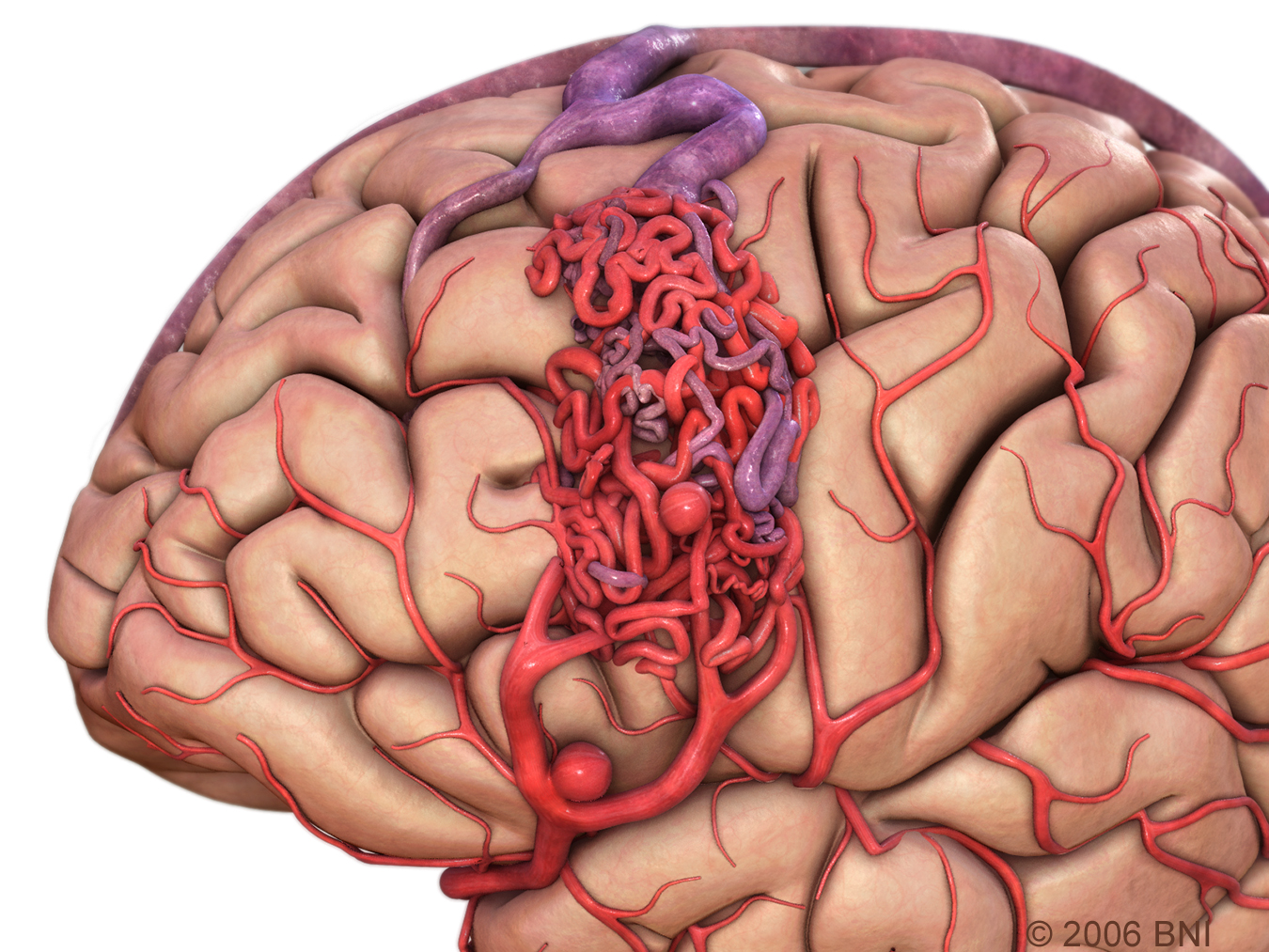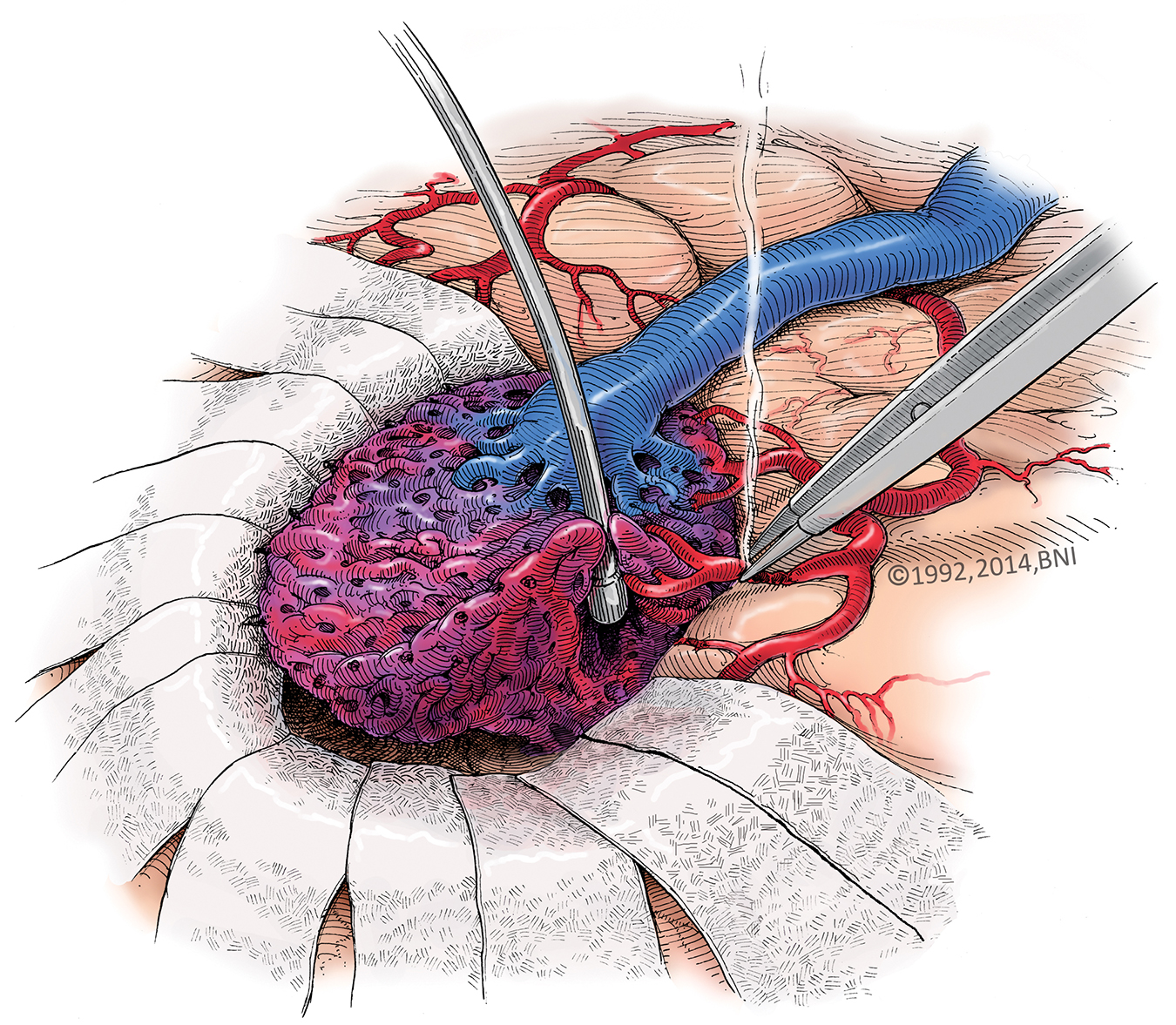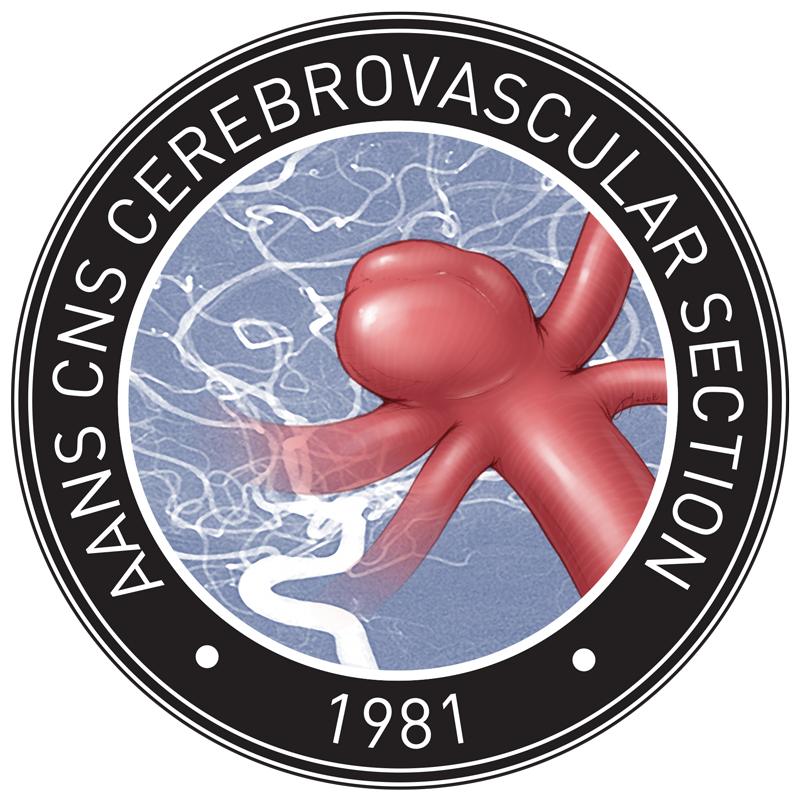Arteriovenous Malformation Images
The above image illustrates the abnormal connection between the cerebral arteries and veins that is characteristic of arteriovenous malformations. The lack of any intervening capillaries results in the high pressure arterial blood flowing directly into the cerebral veins.

This image highlights several common features of cerebral arteriovenous malformations. The first, and most obvious, is the large tangle of vessels, the nidus, where arterial blood flows directly into the veins. In addition, there is a small round dilation of one of the arteries within the nidus and this represents a nidal aneurysm. Also represented is another round dilation of the artery feeding the AVM and this is a feeding artery aneurysm.

This drawing shows how the surgical resection of these lesions is performed. Many sterile cotton pledgets are used to protect the normal brain as the surgeon uses electrocautery to occlude and divide the arteries that are feeding the nidus of the AVM. Slowly the lesion is dissected out and elevated. Lastly the vein that is draining the AVM can be cut and the lesion removed.

